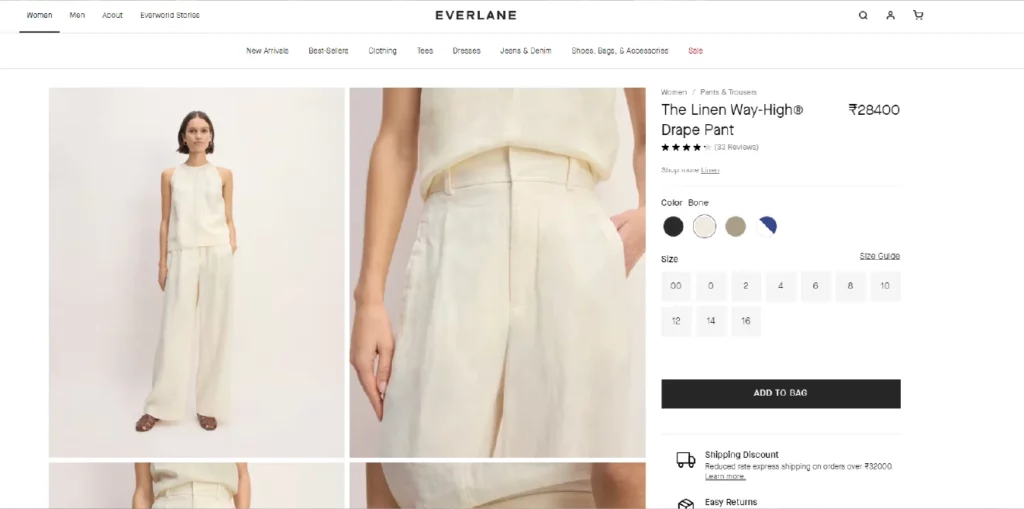Best Practices for Sustainable Website Design and Development
eCommerce is here for good!
The urge for online shopping has only increased in the past few years and with Covid-10. Statista forecasts that online retail revenue will exceed 1.7 trillion dollars by 2027.
Do you want to hop on the eCommerce journey?
And learn about website design and development that is user-friendly and sustainable?
The growing consumer market is becoming aware of its environmental impact, and creating a sustainable eCommerce website can help your business be commercially viable and attract more customers.
Learn the sustainable practices to incorporate in your eCommerce website to reduce your carbon footprint, minimize waste, and contribute to a better future for our planet.
Do People Really Care about Sustainable eCommerce?
The fast Answer is yes!
If you’re targeting Generation Z or Millennials, they are the most prominent advocates of sustainability, climate change, and green business.
According to the First Insight study, 72% of consumer respondents value product sustainability more.
The reality is that people are now increasingly interested in sustainability and supporting sustainable brands, especially in the fashion, home, and beauty categories.
American Trends Panel has reported that:
- 64% of Americans state that efforts to reduce climate change need to be prioritized
- 69% of Americans say businesses and corporations are doing too little to address climate change

Strategies to implement Digital Sustainability
- Optimize your images
High-resolution images look attractive on a website, but they’re causing load time and energy consumption.
Optimizing your images for faster loading is a straightforward process. By reducing their resolution and quality, you can give your website a clean and minimal look. Tools like TinyPNG or WP Smush Pro are user-friendly and can help you with this task.
- Accessible site navigation
A large website with an unruly navigation structure will confuse and annoy customers.
It also increases the time people spend clicking around the website to find the required information.
Create a clear, accessible navigation structure so customers can quickly access the information they want.
- Community Engagement and Education
Build transparency around your website. Inform customers about your website’s sustainability efforts by adding badges or statements about your green practices.
Spread awareness of sustainable design principles on your website and inspire others to follow in your footsteps.
- Clean and Minimalist Design
To prioritize user experience, create an intuitive interface with essential elements.
Avoid unnecessary animations, plugins, and features that make the website heavy and slow.
Ensure that the website is gadget-responsive and adapts seamlessly to devices such as desktops, mobiles, and tablets to avoid the need for separate mobile sites.
- Renewable Energy Hosting
Choose eco-friendly web hosting providers that use renewable energy sources to reduce your website’s carbon footprint.
- Utilizing Sustainable Technologies
Lazy loading, a technique to improve website performance, involves deferring the loading of non-critical elements that are initially not visible on the screen until the user scrolls down. This reduces the website’s loading time and enhances the user experience. Content Delivery Networks are geographically distributed servers that store website assets such as images and scripts, and can reduce the load time of a website by minimizing the distance that the data has to travel. CDNs reduce energy consumption, making them an eco-friendly solution
A few examples we saw

Organic Basics
This is a primary example of how an eco-conscious website should be like. For example, Organic Basic replaced photos with simple illustrations of the products.
The photo is available when customers request it. It’s an amazing example and proof that sustainable web design is possible.

Bite Toothpaste Bits
Bite Toothpaste Bits excels in sustainability, especially with its packaging. It has eliminated plastic from its packaging, and its eCommerce strategy is equally impressive. It offers a subscription model that comes in reusable glass packaging. Meanwhile, secondary deliveries arrive in recyclable paper envelopes, ensuring a sustainable refill process.

Patagonia
Patagonia’s website uses a clean, minimalist, and sustainable web design, focusing on high-quality product photography and informative product descriptions. It reduces the need for graphics and animations, slowing page load times. Not their products, but their initiative is the main image you see. They encourage sustainable user behavior and highlight initiatives that extend the life of their products.

Everlane
Everlane’s website provides life cycle analysis information for some of its products. LCAs assess a product’s environmental impact throughout its lifecycle, from raw material to final product. This transparency allows customers to make informed decisions.
Everlane uses recycled materials in their packaging and website design whenever possible. This reduces their environmental footprint.
Everlane’s website includes educational content about the environmental impact of fashion to raise awareness and educate customers about sustainable fashion practices.
Tekglide encourages sustainable website design and development
By prioritizing sustainability, Tekglide aims to minimize websites’ environmental impact while maximizing their effectiveness and user experience.
Our approach to sustainable web design is simple. It confines a mix of strategies, including optimizing code to reduce file size and loading times, implementing clean and minimalist design principles to enhance user experience, and utilizing renewable energy hosting to lower carbon footprints.
We also embrace sustainable technologies such as lazy loading and Content Delivery Networks to improve website performance while reducing energy consumption. Through these practices, we create websites that meet our clients’ needs and contribute to a more sustainable future.
Conclusion
With Tekglide, you can enable Sustainable eCommerce. Care about the future, make sustainable efforts, and talk about it.
The growing consumer market is becoming more aware of its environmental impact, and creating a Sustainable eCommerce website can make your eCommerce commercially viable and attract more customers.
By incorporating sustainable practices into your website, you can reduce your carbon footprint, minimize waste, and contribute to a better future for our planet.







